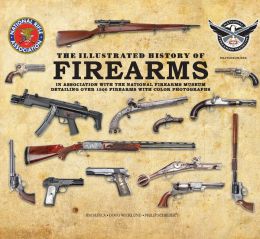Smokeless Powders
 The Illustrated History of Firearms: In Association with the National Firearms Museum 
|
These include a wide array of formulations but all are based on nitrocellulose. The first smokeless powder was developed in 1884 by Paul Vieille, a French engineer who mixed nitrocellulose with ether and alcohol. His mixture was kneaded to produce a colloided mass that was pressed into sheets and cut into small squares then dried.
In 1889, Nitrocellulose was mixed with nitroglycerin by Alfred Nobel to produce another type of smokeless powder. Innovations on formula and method of manufacture rapidly progressed and the smokeless powders ultimately displaced black powder for use as propellants for arms; sporting as well as military small arms and artillery. Generally, smokeless powders are classified by their formulations and any one formula can be made to serve a vast array of performance requirements, varying by size, shape and of the grains produced from it. Such variations affect the surface areas of the grains, thus consequently, their rate of energy release as well due to the material burning only on the surface instead of detonating as high explosives do.
Some of the shapes or forms modern smokeless powders are produced in are flakes, strips, pellets and cylinders. Generally, the size of the grains tend to increase with the size of the weapon in which they are used.
See Gunpowder.

No comments:
Post a Comment